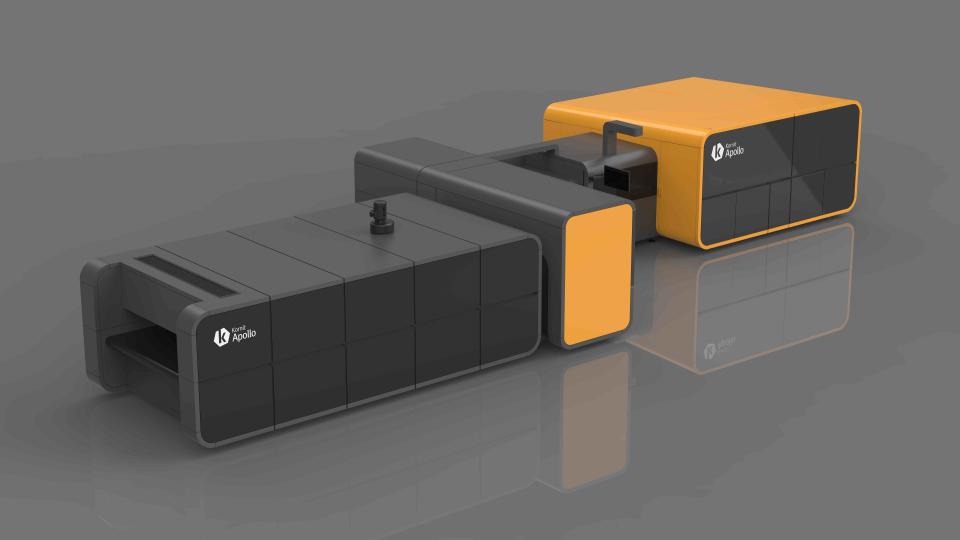Kornit Unveils New Innovations at ITMA

Israel-based digital fashion company Kornit unveils its new Apollo printing system and Kornit Presto Max technology updates at the International Textile Machinery Association’s annual conference kicking off Thursday in Milan. The company’s chief marketing officer Omer Kulka described the Apollo launch as a “full-scale automated production line for direct-to-garment.”
For Kobi Mann, Kornit’s chief technology officer, the launch caps off years of painstaking work to develop the automation and streamlining of direct-to-fabric and direct-to-garment, wet-on-wet digital printing. Mann said Apollo is a “breakthrough” because it is fully digitized and automated, requiring just one employee to manage the entire operation.
More from Sourcing Journal

The Apollo innovation was made possible by the Kornit Max technology for direct-to-fabric and direct-to-garment, which Mann’s team worked on for four years and which he refers to as the “Holy Grail” of direct-to-garment and roll-to-roll fabric printing. Released in April of 2021, it featured XDi, which delivered new 3D capabilities for high-density graphic decoration in a “single, waste-free digital process.”
Mann describes the new Apollo system as bringing the best of the analog screen printing and digital worlds into one, fully automated unit. It traces its origins to the company’s launch in 2003 when Kornit began guided by the inspiration and principle of using pigment rather than dyes to create colors.
“Pigment is different from a dye by the fact that it is a solid particle, like the brown of coffee, for example. It absorbs the light and emits the light, but it’s a solid—it’s more complicated to create a formulation of that,” Mann told Sourcing Journal. “The main benefit of pigment is within the analog industry where it’s considered cheap. In the digital industry, it’s considered very costly because you’re taking particles that you don’t want to aggregate and sink within the material.”
Besides efficiently bringing pigment printing to the digital world, Apollo delivers high volume, too. The company says the Apollo system can churn out 400 garments per hour for “any kind of job.”
With the Kornit Max Plus updates and new Apollo system, Kornit is “covering the two spaces of the DTG, roll to roll,” Mann said.
But with Kornit’s 20-year anniversary at hand, so, too, is the 20-year sunset on many of its patents, an area of concern for the company that is headquartered in Israel with offices in Duesseldorf, Germany, Macclesfield, UK, Shanghai, Kowloon, Hong Kong and Englewood, N.J.
Kornit insists that many of those earlier patents do not expire until 2030 and says it is also actively defending its patents against competitors, who see the 20-year benchmark as a green light to open use.
Mann said most of Kornit’s patents expire at the end of 2030, not 2023. “The patents that were filed in 2004 indeed will expire soon, but the patents that cover our actual technology were filed in 2009 when we developed our innovative water-based inks and process for wet-on-wet printing on textiles,” he added.
Mann said despite that 2009 caveat, competitors in the have sought to pounce on a patent set to turn 20 on June 16, just two days after ITMA wraps up.
“People were under [the 2023 expiration] assumption and went and copied part of our ideations and unique value proposition,” Mann said. “We are eager to protect our IP.”
A Kornit spokesperson said those patents have been infringed upon by those in the direct-to-fabric [DTF], not direct-to-garment [DTG] space.
The company says it owns more than 80 patents with another 100 provisional or pending.
The main patent at issue, titled, “Method for image printing on a dark textile piece,” is described in the abstract as “A method and apparatus for color printing on a dark textile piece, the method including the steps of digitally applying a white masking layer directly onto a textile piece, curing the white masking layer, and digitally printing a colored image on said masking layer.”
The patent was granted on Dec. 16, 2004, but the 20-year clock toward its expiration started ticking on June 16, 2003.
Competition in the digital garment printing space is projected to intensify in the coming years. According to Technavio’s latest market research data, the digital textile printing market is expected to grow by $2.54 billion from 2023-2027, an increase of 13.5 percent each year

